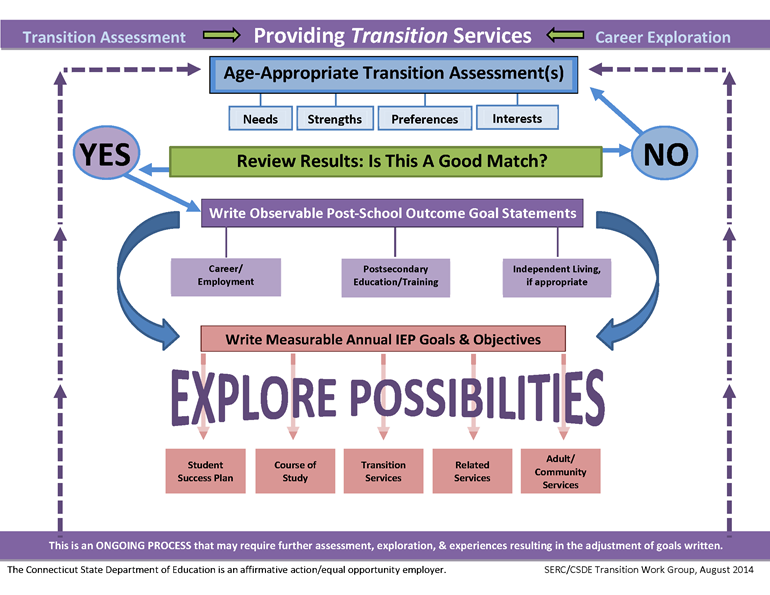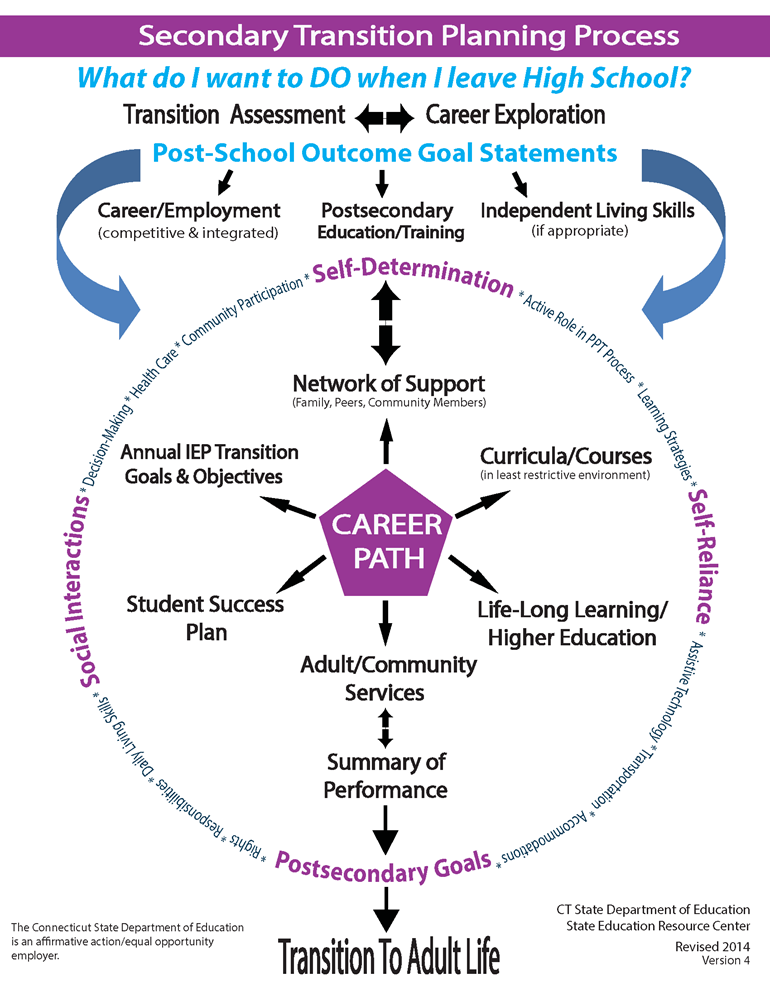Secondary Transition - Planning from School to Adult Life
CT 6th Annual Secondary Transition Symposium - Virtual Event on Friday, January 29, 2021
Secondary Transition Resources During the COVID-19 Pandemic
Pursuant to Section 300.1, one of the purposes of the Individuals with Disabilities Education Act (IDEA, 2004) is to ensure that all children with disabilities have available to them a free appropriate public education (FAPE) that emphasizes special education and related services designed to meet their unique needs and prepare them for further education, employment, and independent living.
Transition Services Requirements
Pursuant to state statute, transition services are required beginning not later than the first individualized education program (IEP) to be in effect when the child turns 14 (with the diagnoses of Autism) and beginning not later than the first IEP to be in effect when the child turns 16, or younger if determined appropriate by the planning and placement team (PPT) (for all other primary disability categories), and updated annually thereafter.
The IEP shall include (A) Appropriate measurable postsecondary goals based upon age appropriate transition assessments related to training, education, employment, and, where appropriate, independent living skills; and (B) the transition services, including courses of study), needed to assist the child in reaching those goals.
November 4, 2019 Memo: Changes to Statutory Transition Services Requirements Effective July 1, 2019
Transition Services means a coordinated set of activities for a child with a disability that:
- Is designed to be within a results-oriented process, focused on improving the academic and functional achievement of the child with a disability to facilitate the child’s movement from school to post-school activities, including postsecondary education, vocational education, integrated employment (including supported employment), continuing and adult education, adult services, independent living, or community participation; and
- Is based on the individual child’s needs, taking into account the child’s strengths, preferences, and interests and includes:
- instruction;
- related services;
- community experiences;
- the development of employment and other post-school adult living objectives; and
- if appropriate, acquisition of daily living skills and provision of a functional vocational evaluation.
Transition services for children with disabilities may be special education, if provided as specially designed instruction, or a related service, if required to assist a child with a disability to benefit from special education.
PPT Membership for Secondary Transition Services
For PPT meetings where a purpose of the meeting is the consideration of the postsecondary goals for the student and the transition services needed to assist the student in reaching those goals, the District will invite the student with a disability, and with the consent of the parents, a representative of any participating agency that is likely to be responsible for providing transition services, to attend the student’s PPT meeting. If the student does not attend the PPT meeting, the District will take other steps to ensure that the child’s preferences and interests are considered.

Alternate text version of providing secondary transition services flow chart (2020)
Proporcionar Servicios de Transición (2020)

Alternate text version of secondary transition services planning process (2020)
Proceso de Planificación de la Transición Secundaria (2020)
Professional Learning Opportunities

